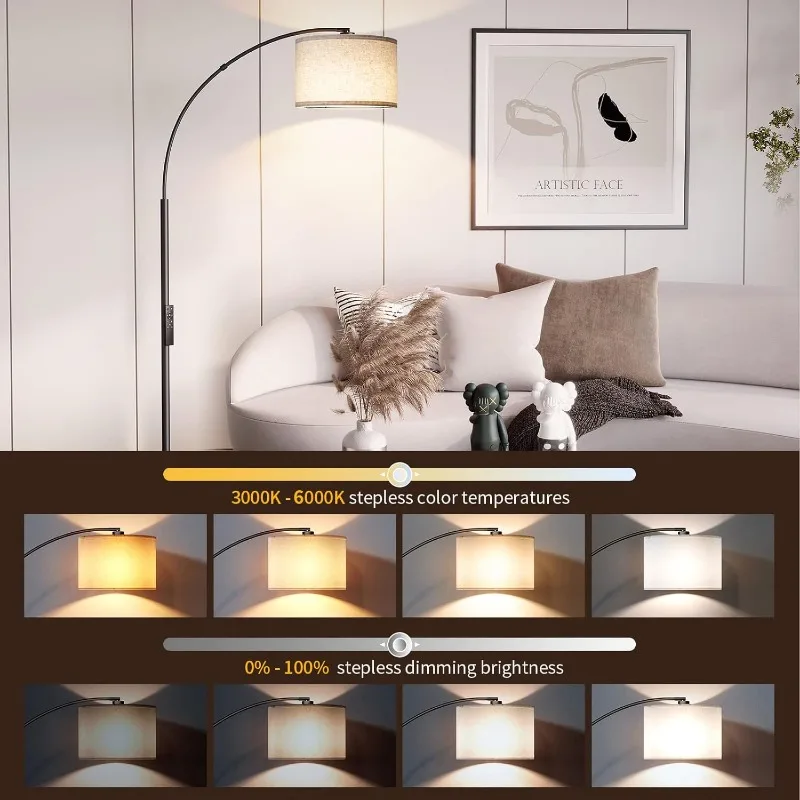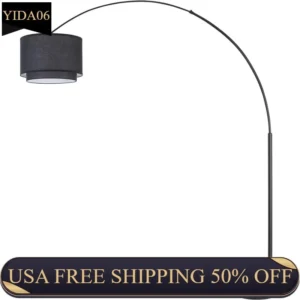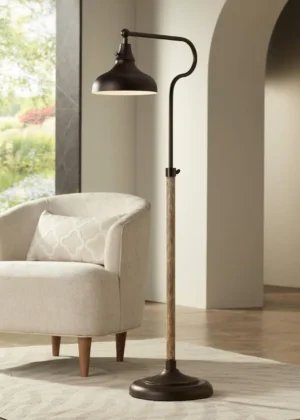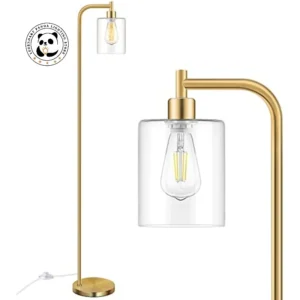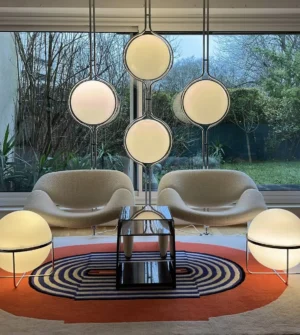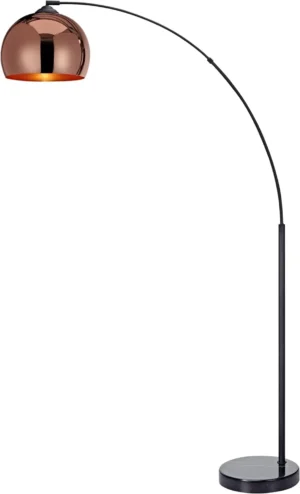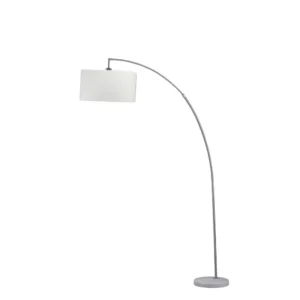Reading is one of life’s greatest pleasures, but poor lighting can quickly turn this enjoyable activity into an uncomfortable experience. Many readers struggle with eye strain, headaches, and fatigue simply because they don’t have the right lighting. The solution? A specialized floor lamp designed specifically for reading.
The perfect reading lamp serves as both a functional tool and a stylish addition to your home. With the right lamp, you can:
- Reduce eye strain and prevent vision-related headaches
- Improve focus and concentration while reading
- Enjoy books for longer periods without discomfort
- Enhance your reading nook’s appearance and ambiance
In this comprehensive guide, we’ll explore everything you need to know about selecting the ideal floor lamp for focused reading. From essential features to placement strategies, you’ll discover how to transform your reading experience while protecting your precious eyesight.
Creating reading lamp solutions that balance both form and function doesn’t have to be complicated—once you understand what to look for.
The Crucial Connection Between Reading Lamps and Eye Health
Did you know that inadequate lighting is a leading cause of preventable eye strain? When you read in poor lighting conditions, your eyes work overtime trying to compensate. This increased effort triggers a chain reaction of problems:
- Your pupils dilate excessively, causing muscle fatigue around the eyes
- The contrast between text and page decreases, making letters harder to distinguish
- Your blinking rate often decreases, leading to dry eyes and irritation
According to vision researchers, approximately 65% of Americans experience symptoms of digital eye strain, and improper lighting is a major contributing factor. The same principles apply whether you’re reading physical books or digital screens.
Using proper focused lighting provides immediate benefits:
- Sharper contrast between text and background
- Reduced pupil constriction and dilation cycles
- More comfortable reading posture as you’re not hunching to see better
- Improved comprehension and retention of what you read
Over time, using appropriate reading light can help prevent the development of chronic eye issues and maintain better vision health. Understanding the perfect reading lamp options for your specific needs is the first step toward healthier reading habits.
Essential Features That Make a Floor Lamp Perfect for Reading
Not all floor lamps are created equal when it comes to reading. While a standard decorative lamp might provide general room illumination, reading demands specialized lighting features to protect your eyes and enhance the experience.
When shopping for a reading floor lamp, you’ll want to evaluate several key features that work together to create the optimal reading environment. Think of these elements as your checklist for finding the perfect lamp—one that provides precise illumination exactly where you need it without causing glare or shadows.
The right adjustable arc floor lamp combines these features to create a personalized reading experience that’s both comfortable and eye-friendly. Let’s explore each of these critical elements in detail.
Adjustability: The Key to Personalized Lighting
Perhaps the most important feature of any reading lamp is adjustability. Without the ability to direct light precisely where you need it, even the brightest lamp can create shadows or glare that strain your eyes.
Good reading lamps offer several types of adjustability:
- Height adjustment: Allows you to match the lamp to your seating height
- Head angle adjustment: Lets you direct light toward your reading material
- Arm flexibility: Enables you to position the light source at the optimal distance
The best arc lamps for reading feature multiple adjustment points that let you create the perfect lighting angle—ideally with the light coming from behind your shoulder at approximately a 45-degree angle. This positioning minimizes glare on glossy pages and prevents your own shadow from falling across the text.
Look for lamps with smooth, reliable adjustment mechanisms that stay in position once set. Cheap joints that slip or loosen over time can transform a good reading lamp into a frustrating experience.
Brightness and Dimmability: Finding Your Perfect Light Level
Brightness is measured in lumens, not watts. For reading, you’ll typically want a lamp that provides between 800 and 1500 lumens—enough light to see clearly without being harsh or glaring.
However, the ideal brightness level varies based on:
– The type of reading material (fine print requires more light)
– Your age (older eyes generally need more light)
– The time of day (you may want less brightness in the evening)
This is why dimmability is such a valuable feature in reading lamps. Dimmable arc floor lamps allow you to adjust the intensity to match your needs at any given moment. Look for lamps with continuous dimming (rather than just 2-3 preset levels) for the most flexibility.
Some advanced lamps even feature memory settings that remember your preferred brightness levels for different times of day or activities.
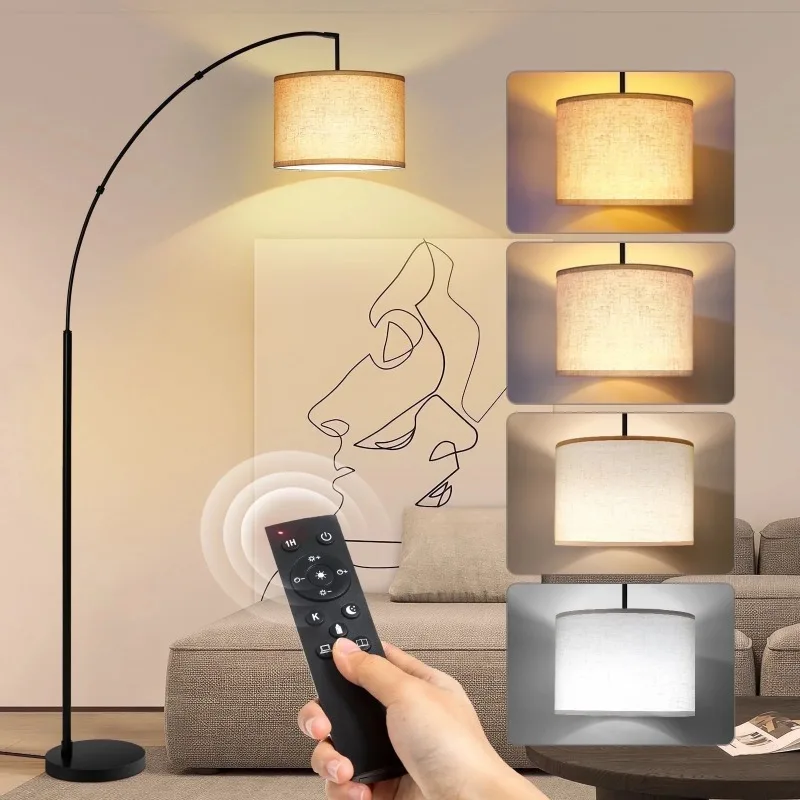
Color Temperature: Warm vs. Cool Light for Reading
Color temperature, measured in Kelvins (K), significantly impacts how comfortable and effective your reading light will be. The temperature scale ranges from warm yellow light (2700K) to cool bluish light (6500K).
For reading, most experts recommend:
– 3000K-3500K: A neutral white light that provides good contrast without being too harsh
– 2700K-3000K: Warmer light that’s easier on the eyes in the evening
– 4000K-5000K: Cooler light that promotes alertness for studying or technical reading
Each temperature has distinct benefits. Warmer lights are more relaxing and less likely to interfere with your sleep cycle when reading before bed. Cooler lights enhance contrast and keep you more alert when concentration is important.
The most versatile floor lamps for lighting reading areas offer adjustable color temperature, allowing you to switch between warm and cool light depending on the time of day and your specific reading material.
Color Rendering Index (CRI): Seeing Colors Accurately
While often overlooked, the Color Rendering Index (CRI) measures how accurately a light source reveals the true colors of objects compared to natural sunlight. For reading, particularly materials with colored illustrations or charts, a high CRI is important.
Look for lamps with a CRI of 90 or higher for the most accurate color reproduction. Low CRI lighting (below 80) can:
– Make colors appear washed out or unnatural
– Reduce contrast between similar colors
– Cause eye fatigue as your brain works harder to interpret what you’re seeing
This feature is especially important if you read art books, crafting instructions, or color-coded educational materials where color accuracy matters.
Anti-Glare and Eye Protection Technologies
Glare is one of the biggest enemies of comfortable reading. It creates visual noise that strains your eyes and makes focusing difficult. Modern reading lamps include several technologies to combat glare:
- Diffusers that spread light evenly without hot spots
- Frosted lenses that soften the light
- Indirect lighting designs that bounce light off surfaces
Another important consideration is flicker. Even imperceptible flickering (beyond what you can consciously detect) can cause eye strain and headaches over time. Quality LED arc floor lamps feature flicker-free technology that maintains consistent light output.
Some modern reading lamps also address blue light concerns with special filtering options that reduce the potentially sleep-disrupting blue wavelengths, especially important for evening reading.
Energy Efficiency and Bulb Types
Today’s reading lamps predominantly use LED technology, which offers significant advantages for readers:
- Instant full brightness (no warm-up time)
- Consistent light output without degradation
- Minimal heat production
- Energy efficiency (using 75-80% less energy than incandescent bulbs)
- Long lifespan (typically 25,000-50,000 hours)
When comparing LED options, consider whether you prefer:
– Integrated LED fixtures (where the light source is built into the lamp)
– Replaceable LED bulbs (which allow you to change the bulb when needed)
While integrated LEDs often provide better performance and sleeker designs, replaceable bulbs offer more flexibility if you want to change the light characteristics in the future.
Stability and Construction Quality
A reading lamp needs to stay exactly where you position it. Wobbling or drifting out of position can quickly ruin your reading experience. Quality indicators to look for include:
- Heavy, weighted bases that prevent tipping
- Sturdy materials throughout the lamp construction
- Smooth but firm adjustment mechanisms
- Quality wiring and switches that operate seamlessly
Metal components generally outlast plastic ones, particularly at stress points like joints and adjustment mechanisms. Though they may cost more initially, well-built lamps often last decades rather than years, making them better investments in the long run.
Design and Aesthetics That Complement Your Space
While functionality is paramount for reading lamps, there’s no reason to sacrifice style. Today’s reading lamps come in various designs to complement any interior:
- Modern/contemporary designs with clean lines and minimalist profiles
- Traditional styles with classic shapes and warmer finishes
- Industrial looks featuring exposed hardware and mechanical elements
- Mid-century modern options with distinctive vintage-inspired shapes
The best contemporary arc floor lamps combine beautiful design with full functionality, becoming statement pieces that enhance your decor while serving their practical purpose perfectly.
Best Floor Lamp Styles Specifically Designed for Reading
Different reading situations call for different lamp designs. Understanding the strengths of each style helps you select the right lamp for your particular reading habits, seating arrangement, and space constraints. Let’s explore the most effective floor lamp types specifically engineered for reading comfort.
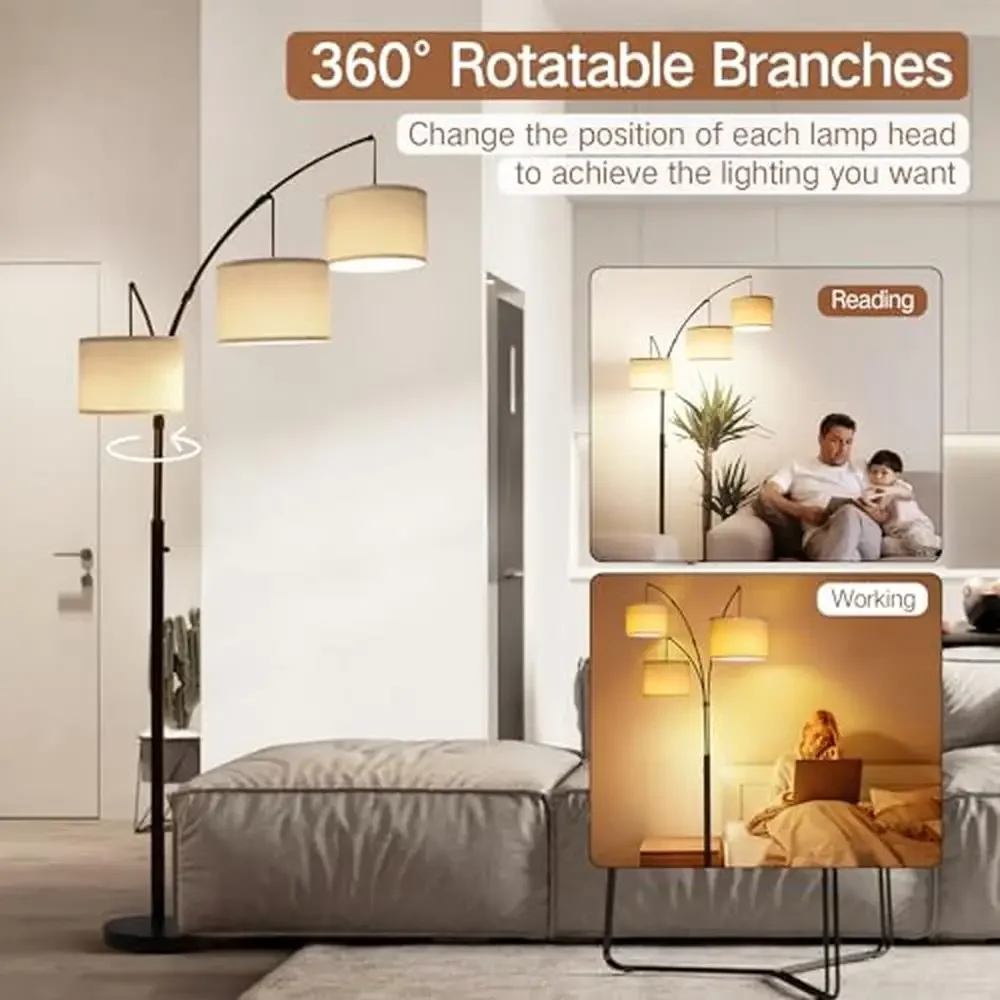
Articulated and Gooseneck Floor Lamps: Ultimate Flexibility
Articulated lamps feature multiple joints that allow precise positioning of the light source in three-dimensional space. Gooseneck designs use a flexible neck that can be bent and shaped to direct light exactly where needed.
These designs excel at:
– Accommodating different reading positions as you shift in your seat
– Working with various book sizes and formats
– Adjusting to different seating heights and arrangements
Learning how to position arc lamps for reading properly maximizes their flexibility. The best models maintain their position without drifting and feature heads that can rotate 360 degrees for precise light direction.
One limitation to consider is that highly flexible arms sometimes have less reach than swing arm designs, which may be important depending on your room layout.
Swing Arm Floor Lamps: Extended Reach for Reading Areas
Swing arm lamps feature a horizontal arm that can extend outward from the main post, providing excellent reach over reading chairs or sofas. Unlike gooseneck models that bend in multiple directions, swing arms typically move in a more limited horizontal plane but offer greater stability and reach.
These lamps work particularly well:
– When positioned behind or beside reading furniture
– In arrangements where the lamp base can’t be placed directly next to the reader
– For larger reading areas where extended reach is necessary
The counterbalanced designs of quality swing arms allow them to extend 20-30 inches while remaining stable. Creating a perfect reading nook often involves positioning these lamps to provide light without taking up valuable seating space.
Pharmacy and Task Floor Lamps: Classic Reading Companions
Pharmacy lamps, inspired by the focused lighting needed by pharmacists counting pills, feature a distinctive downward-directed shade that minimizes light scatter. This classic design has been refined over decades to provide concentrated illumination for detailed tasks like reading.
Modern versions improve on the original design with:
– More adjustable heads and arms
– Better light sources with higher CRI values
– More stable bases and improved balance
The focused, downward light pattern is particularly effective at illuminating pages without creating ambient light that might disturb others. However, this focused nature also means less flexibility for illuminating larger areas or multiple positions.
Magnifier Floor Lamps: Combined Lighting and Vision Enhancement
For readers who need vision assistance, magnifier lamps incorporate a large lens (typically 3-5 inches in diameter) with built-in lighting around the perimeter. These specialized lamps offer:
– Magnification levels typically ranging from 1.75x to 3x
– Even, shadow-free illumination of the magnified area
– Hands-free operation for comfortable extended reading
These lamps require more precise positioning than standard reading lamps, as the focal distance of the magnifier must be maintained for clear vision. They’re ideal for detailed reading, fine print, or crafting tasks that require both extra light and magnification.
Strategic Placement of Your Reading Floor Lamp
Even the best reading lamp won’t perform well if placed incorrectly. Proper positioning is crucial for eliminating shadows, preventing glare, and maintaining comfortable posture while reading.
The ideal placement follows these principles:
– Position the lamp slightly behind your shoulder (left side for right-handed readers, right side for left-handed readers)
– Aim the light at a 45-degree angle toward your reading material
– Place the light source about 14-16 inches above the reading material
– Ensure the lamp head is 12-16 inches away horizontally from your book or device
Common positioning problems to avoid:
– Placing the lamp directly in front, which creates glare
– Positioning too far to the side, causing uneven illumination
– Setting the height too low, which creates shadows from your hands
Perfectly lighting reading corners requires considering both the lamp’s capabilities and your typical reading posture. Experiment with different positions to find what works best for your specific setup.
Enhancing Your Reading Setup Beyond the Lamp
While a quality reading lamp is essential, creating the perfect reading environment involves more than just focused lighting. Consider these complementary elements:
- Ambient lighting: Balance your focused reading light with gentle background illumination to reduce contrast extremes
- Surface colors: Choose matte, neutral-toned surfaces around your reading area to minimize reflections
- Seating: Select chairs that support proper posture and allow your lamp to be correctly positioned
- Seasonal adjustments: Adapt your lighting as natural daylight changes with seasons
Understanding whether lamps should be placed in corners or other locations helps create the perfect balance between task lighting and room aesthetics. The goal is to create a harmonious environment where your reading lamp provides focused illumination within a comfortable overall light balance.
Contemporary Arc Floor Lamp, Large Arc Floor Lamp, Oversized Arched Floor Lamp
$460.63 Select options This product has multiple variants. The options may be chosen on the product pageAdjustable Arc Floor Lamp, Bronze Arc Floor Lamp
Price range: $440.95 through $558.52 Select options This product has multiple variants. The options may be chosen on the product pageBrass Arc Floor Lamp, Contemporary Arc Floor Lamp, LED Arc Floor Lamp
Price range: $490.72 through $522.04 Select options This product has multiple variants. The options may be chosen on the product pageChrome Arc Floor Lamp, LED Arc Floor Lamp
Price range: $304.95 through $1,210.40 Select options This product has multiple variants. The options may be chosen on the product pageContemporary Arc Floor Lamp, Large Arc Floor Lamp, Marble Base Arc Floor Lamp
$224.94 Select options This product has multiple variants. The options may be chosen on the product pageContemporary Arc Floor Lamp, Silver Arc Floor Lamp
$459.99 Select options This product has multiple variants. The options may be chosen on the product page
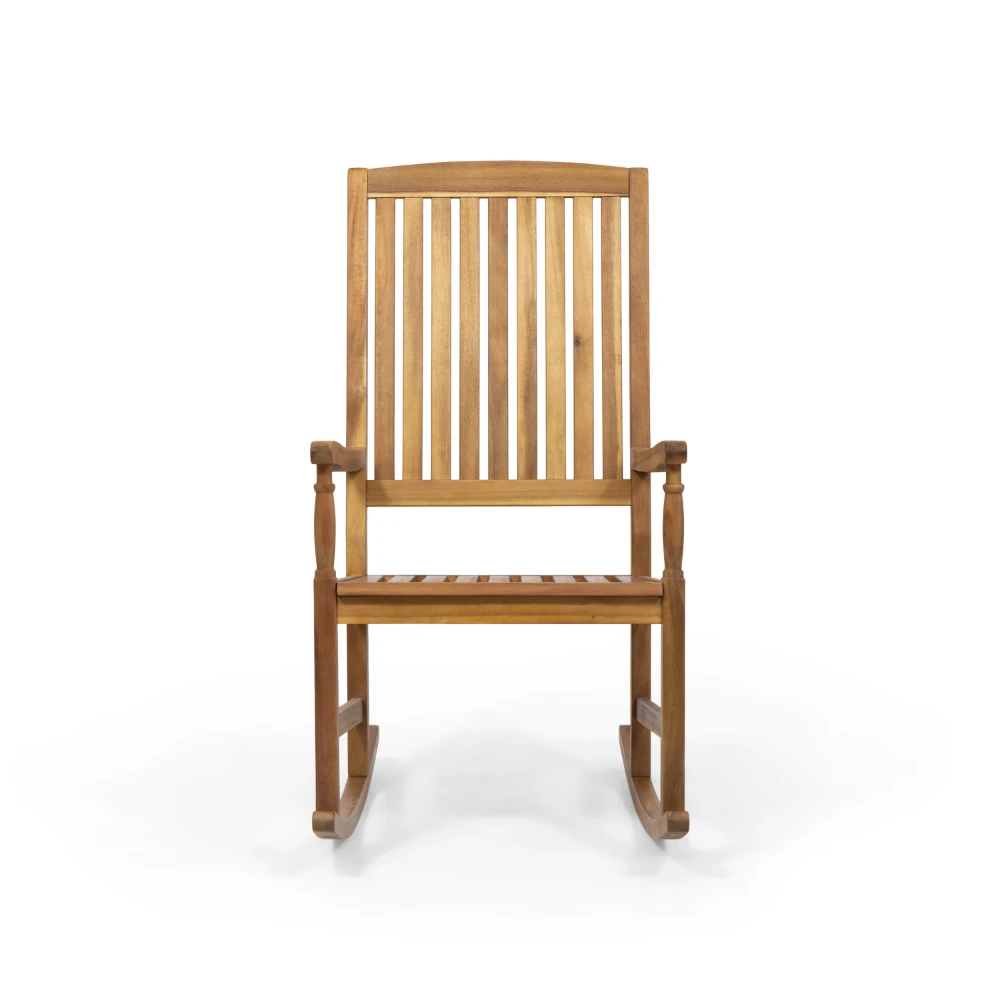
Addressing Special Reading Situations and Needs
Different reading scenarios often require specialized lighting solutions:
For readers with vision impairments:
– Look for lamps with higher lumen output (1200-1500 lumens)
– Consider adjustable color temperature to find the most comfortable setting
– Explore combination magnifier/light options for severe vision challenges
For shared reading spaces:
– Choose lamps with precise light control to avoid disturbing others
– Consider models with built-in USB charging ports for multiple readers’ devices
– Look for quiet dimming mechanisms that won’t disturb others when adjusted
For nighttime reading without disturbing partners:
– Select lamps with highly focused beams that minimize light spill
– Choose warm color temperatures (2700K) that are less likely to disrupt sleep
– Consider lamps with automatic timers for falling asleep while reading
The ultimate guide to reading arc floor lamps provides detailed solutions for bedroom settings where controlling light direction and intensity is particularly important.
Frequently Asked Questions About Reading Floor Lamps
How much should I expect to spend on a quality reading floor lamp?
Quality reading lamps typically range from $80-$300. While budget options exist, lamps under $60 often lack important features like stable bases, smooth adjustments, and quality light sources that protect your eyes.
Are LED lamps really better for reading than traditional bulbs?
Yes, modern LEDs outperform traditional bulbs for reading in almost every way—they provide more consistent light, generate less heat, last much longer, and use significantly less energy while offering better control over brightness and color temperature.
Can I use a regular floor lamp for reading instead of a specialized one?
While possible, regular decorative floor lamps typically lack the adjustability, focus, and eye-protecting features of dedicated reading lamps. This can lead to eye strain, shadows, and discomfort during extended reading sessions.
How close should my reading lamp be to my book or e-reader?
For most readers, the ideal position is 12-16 inches away horizontally, with the light source 14-16 inches above the reading material. This provides adequate brightness without creating glare or shadows.
What’s the difference between task lighting and ambient lighting for reading?
Task lighting (your reading lamp) provides focused, direct illumination for your specific activity, while ambient lighting creates general room illumination. For comfortable reading, you need both—too much contrast between your bright reading material and a dark room can cause eye strain.
Are there cordless or rechargeable options for reading floor lamps?
Yes, rechargeable reading floor lamps are becoming more common. They typically offer 6-12 hours of use between charges, providing flexibility for placement away from outlets. However, they may have lower maximum brightness than corded options.
The guide to soft lighting arc lamps provides additional information about eye-friendly lighting options for various situations.
Making the Investment: Why Quality Reading Lamps Are Worth It
Investing in a high-quality reading floor lamp delivers benefits that extend far beyond simple illumination:
- Prevention of eye strain and related health issues, potentially saving on healthcare costs
- Enhanced reading enjoyment leading to more reading time and greater knowledge acquisition
- Improved concentration and comprehension during reading sessions
- Durability that translates to years or even decades of reliable service
When you consider the cost per use over the lifespan of a quality lamp, even premium models like those from Interior Ivy become remarkably economical investments in your comfort and eye health.
The best black arc floor lamps and other premium reading lights are engineered specifically to provide years of reliable service while protecting your vision—making them not just purchases but investments in your daily reading enjoyment and long-term eye health.
By selecting the right reading lamp with the features we’ve discussed, you’ll transform your reading experience from one of potential discomfort and strain to one of pure enjoyment and focus—exactly as it should be.

